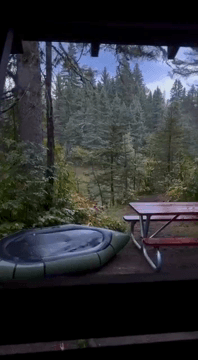
Hunting Seasons in ONTARIO: Must-Know Regulations, Key Timelines and Traditional Hunting Events Ontario offers some of the most diverse hunting opportunities in North America, with its vast wilderness spanning over 1 million square kilometers. Understanding seasonal patterns, legal requirements, and practical strategies is essential for both local and international hunters. General Rules and Hunting Periods in Ontario The province follows a well-defined seasonal structure. Spring bear season runs mid-April to mid-June, followed by fall bear hunting from August 15 to October 31. Moose season typically takes place September to November, depending on the zone. Deer hunting includes an archery season starting in September, with rifle season beginning the second week of October. Waterfowl hunting spans early September to late December, while small game seasons vary widely by species and region. These dates are set by the Ontario Ministry of Natural Resources and Forestry (MNRF) through biological research, population monitoring, and habitat analysis. Decisions consider wildlife dynamics, migration, breeding cycles, and environmental conditions. Ontario is divided into 94 Wildlife Management Units (WMUs), each with tailored rules reflecting regional differences. Northern regions generally allow longer big game seasons due to lower human density, while southern areas impose stricter limits. Boreal forest zones differ significantly from mixed forests in the south. Compared to neighboring provinces and U.S. states, Ontario’s moose seasons start later than Manitoba’s but earlier than Quebec’s, while deer seasons closely match timing in Michigan. Waterfowl regulations follow similar patterns to those in Minnesota. Over recent years, notable changes have shaped current policies—antler point restrictions were introduced in 2005, a mandatory hunter reporting system launched in 2016, spring bear hunting zones expanded, and science-based conservation efforts increased. Seasonality and Wildlife Patterns in Ontario Each hunting season presents unique opportunities. Spring focuses on bear and turkey hunting, with limited waterfowl options. Fall is the peak period for big game, offering extensive small game hunting and major waterfowl migrations. Winter allows limited predator hunts and full access to trapping seasons. Big game success depends on timing and behavior. Moose show increased activity during their rut from late September to mid-October. Deer hunting peaks during pre-rut and rut phases, while bears are most active in early fall. Small game like grouse reach peak movement in October, and rabbits or hares are best tracked in winter months when snow improves visibility. Animal activity follows predictable patterns. Dawn and dusk remain productive across species. Rutting periods bring heightened movement, and weather shifts often trigger surges in feeding and travel. Cultural events enrich Ontario’s hunting scene. The annual moose lottery draws offer a thrilling test of luck, where dreams of trophy bulls are made or dashed in public ceremonies often accompanied by community feasts. In February and March, local hunting expos showcase gear and outdoor skills, bringing together hunters, outfitters, and enthusiasts. Conservation gatherings provide forums where hunters, biologists, and Indigenous leaders collaborate on wildlife management issues. Restrictions and Conservation Measures in Ontario Selective harvesting rules protect wildlife populations. Moose may only be taken as bulls or cows based on zone-specific designations. Deer hunting has antler restrictions in many areas, and bear hunting excludes cubs or females with young. Certain species receive full protection, including the extirpated eastern cougar, woodland caribou with limited populations, and specific migratory birds outside designated seasons. Critical protection periods apply to nesting waterfowl, fawning deer, and denning bears, during which hunting is restricted. These measures ensure long-term sustainability. How to Obtain Hunting Permits in Ontario Obtaining a license involves several steps. All hunters must hold an Ontario Outdoors Card , along with appropriate tags. A mandatory Hunter Education Course is required, followed by passing a written exam and submitting applications through official MNRF channels. Support comes from organizations like the Ontario Federation of Anglers and Hunters (OFAH) , local clubs, and regional conservation authorities. These groups provide education, advocacy, and networking for hunters at all levels. Penalties for Regulation Violations Violating laws carries serious consequences. Fines begin at $500 CAD, and penalties include license suspensions, equipment seizure, and possible imprisonment for major offenses. Common violations involve hunting out of season, exceeding bag limits, failing to tag harvests, and illegal baiting. Practical Tips for Successful Hunts in Ontario For success, timing matters. Studying weather patterns, tracking wildlife reports, and considering moon phases can improve outcomes. Gear should match the season—spring calls for lightweight clothing and GPS; fall requires layered insulation and scent control. Tactical approaches vary by species. During deer rut, calling and decoys work well. Bear hunting benefits from strategic baiting, while waterfowl respond to decoys and calling. Turkey hunters rely on precise calling and camouflage. Choosing the right location enhances success. Transition zones, water sources during dry periods, and agricultural edges near forests are prime spots. Ontario's hunting regulations represent a sophisticated balance between conservation and tradition. By understanding seasons, following rules, and using smart strategies, hunters can enjoy successful and sustainable experiences in one of Canada's premier hunting destinations.
Post: 18 August 10:24













































